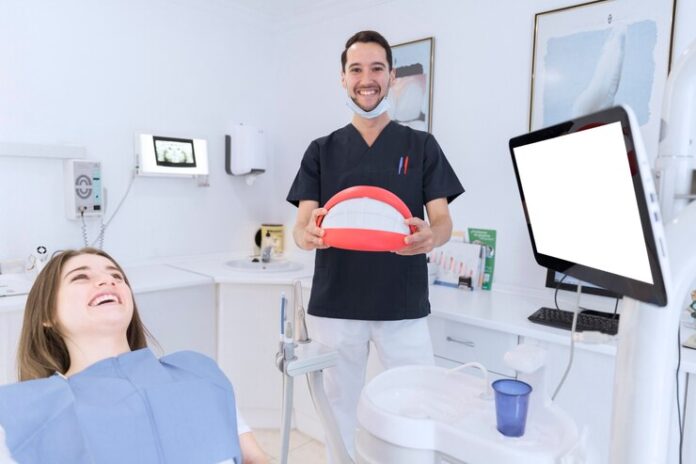In recent years, digital dentistry has transformed the way dental professionals approach cosmetic procedures, particularly the application of porcelain veneers. These thin shells of porcelain are designed to cover the front surface of teeth, enhancing their appearance and improving a patient’s smile. The transition from traditional methods to digital techniques has streamlined the veneer process, offering improved precision, efficiency, and patient satisfaction. This article explores how digital dentistry is revolutionizing the veneer journey from design to delivery, highlighting the role of advanced software tools for dentistry.
The Evolution of Porcelain Veneers
Porcelain veneers have long been a popular choice for those seeking to enhance their smiles. Traditionally, the process involved multiple steps: consultation, tooth preparation, impressions, temporary veneers, and finally, the placement of the permanent veneers. Each step was often time-consuming, with the potential for human error at various stages. With advancements in digital dentistry, this process has become significantly more efficient.
Digital tools allow for precise measurements and imaging, which enhance the overall outcome of the veneer process. The introduction of intraoral scanners, CAD/CAM (Computer-Aided Design and Computer-Aided Manufacturing) technology, and other software tools for dentistry has enabled dental professionals to create detailed 3D models of a patient’s mouth. This technological shift not only improves the accuracy of the final product but also enhances the patient experience by minimizing discomfort and the number of appointments required.
Streamlined Design Process
The design of porcelain veneers begins with a comprehensive assessment of the patient’s dental and aesthetic needs. Traditionally, this involved taking physical impressions using dental putty, which could be uncomfortable for patients and subject to inaccuracies. In contrast, digital dentistry employs intraoral scanners to capture high-resolution images of the teeth and gums. This technology allows dentists to create a digital model of the patient’s mouth in real time, eliminating the need for messy impressions.
Once the digital model is created, dental professionals use specialized software tools for dentistry to design the veneers. These software programs enable dentists to visualize how the veneers will fit and appear on the patient’s teeth. They can manipulate the digital design to achieve the desired shape, color, and alignment, ensuring that the final product meets the patient’s aesthetic goals. This level of customization was difficult to achieve with traditional methods, which often relied on standardized shapes and sizes.
Enhanced Communication and Collaboration
Digital dentistry facilitates better communication between dental professionals and patients. With the help of digital mock-ups and simulations, patients can visualize how their new smile will look before the actual procedure begins. This transparency helps build trust and confidence in the treatment process, as patients can provide feedback and make informed decisions about their desired outcomes.
Additionally, digital tools allow for seamless collaboration among dental teams. Dentists, dental technicians, and specialists can share digital files instantly, ensuring that everyone involved in the veneer process is on the same page. This collaborative approach reduces the likelihood of errors and enhances the efficiency of the treatment workflow.
Efficient Fabrication and Delivery
One of the most significant advantages of digital dentistry is the speed and accuracy of veneer fabrication. Once the design is finalized, the digital model can be sent directly to a milling machine or 3D printer, where the porcelain veneers are created with remarkable precision. CAD/CAM technology enables the production of veneers that fit seamlessly onto the teeth, minimizing the need for adjustments during the fitting appointment.
This rapid turnaround time not only benefits the dental practice but also enhances the patient experience. Patients can often receive their permanent veneers in a single visit, eliminating the need for temporary restorations and additional appointments. This efficiency is particularly appealing for patients seeking quick cosmetic enhancements.
Improved Outcomes and Patient Satisfaction
The transition to digital dentistry has resulted in improved clinical outcomes for patients. The precision offered by digital tools reduces the chances of errors that can occur with traditional methods, such as misfitting veneers or uneven tooth preparation. This level of accuracy contributes to better-fitting veneers that look and feel natural.
Moreover, the ability to customize porcelain veneers based on digital designs allows for a more personalized approach to cosmetic dentistry. Patients are more likely to be satisfied with their results when they have a direct hand in the design process and can see a preview of their new smile before it is finalized.
The integration of digital dentistry into the veneer process has transformed the way dental professionals approach cosmetic treatments. From the initial design to the final delivery, digital tools have streamlined the process, resulting in enhanced precision, efficiency, and patient satisfaction. With the continued advancement of software tools for dentistry, the future of porcelain veneers looks promising, offering even more innovative solutions for creating beautiful smiles. As technology continues to evolve, patients can expect an even more seamless and enjoyable experience in their journey toward achieving the smile they’ve always desired.

